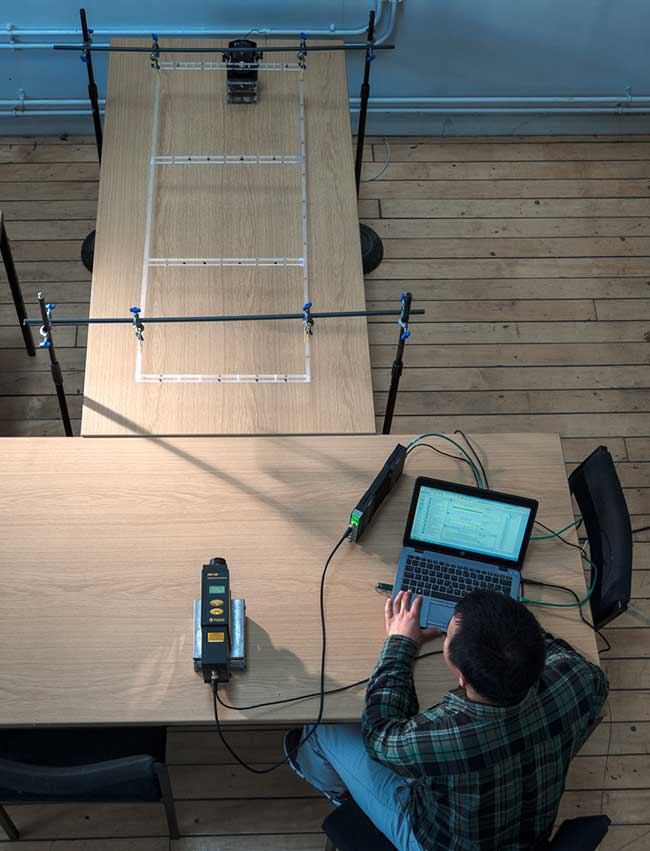
One of the factors affecting the acoustic performance of masonry cavity walls is the type of wall tie used in the construction. Measurement procedures have been developed for the dynamic stiffness parameter to allow wall ties of equivalent dynamic stiffness to be identified without involving other variables involved in laboratory airborne sound transmission across masonry cavity wall constructions such as cavity damping and structural coupling at the boundaries [1]. This is useful when one generic type of wall tie is established in National building regulations and architects or construction companies require the use of non-generic wall ties. This research subsequently led to a BRE Information Paper [2] which is directly referenced in the Building Regulations (2003 Edition) Approved Document E – Resistance to the passage of sound.
Measurement of structural reverberation times on heavyweight walls and floors is often essential to accompany laboratory measurements of airborne or impact sound insulation, or to quantify vibration transmission on junctions of walls and floors. Research has been carried out using Transient Statistical Energy Analysis (TSEA) to predict structural decay curves that can be evaluated to determine the structural reverberation time [3]. Good agreement is shown between decay curves measured on concrete/masonry walls and floors in a large building and those predicted using TSEA. A series of numerical experiments are then performed with TSEA to quantify the error in the estimate of the total loss factor when using different evaluation ranges to calculate the structural reverberation time. The intention is to reconcile the three main issues that have historically caused problems when measuring structural reverberation times on heavyweight walls and floors. These issues are: (1) the evaluation range that is needed to ensure that the total loss factor calculated from the decay curve is representative of the true total loss factor, (2) the errors in the total loss factor when placed in the context of the other errors that occur due to energy flow between the test element and the connected structure, and (3) the signal processing that is necessary to measure and evaluate short decays. The outcome is a proposal for an evaluation procedure to determine structural reverberation times that maximises the part of the early decay which can be used in the evaluation range and identifies when a structural decay curve is and is not significantly affected by energy returning from the rest of the structure.
Selected publications
[1] Hopkins C, Wilson R, Craik RJM (1999) Dynamic stiffness as an acoustic specification parameter for wall ties used in masonry cavity walls. Applied Acoustics vol 58 pp 51-68.
[2] Hall R and Hopkins C (2001) Dynamic stiffness of wall ties used in masonry cavity walls: Measurement procedure IP 3/01. BRE Information Paper.
[3] Hopkins C and Robinson M (2013) On the evaluation of decay curves to determine structural reverberation times for building elements. Acta Acustica united with Acustica vol 99 issue 2 pp 226-244.
Back to: School of Architecture